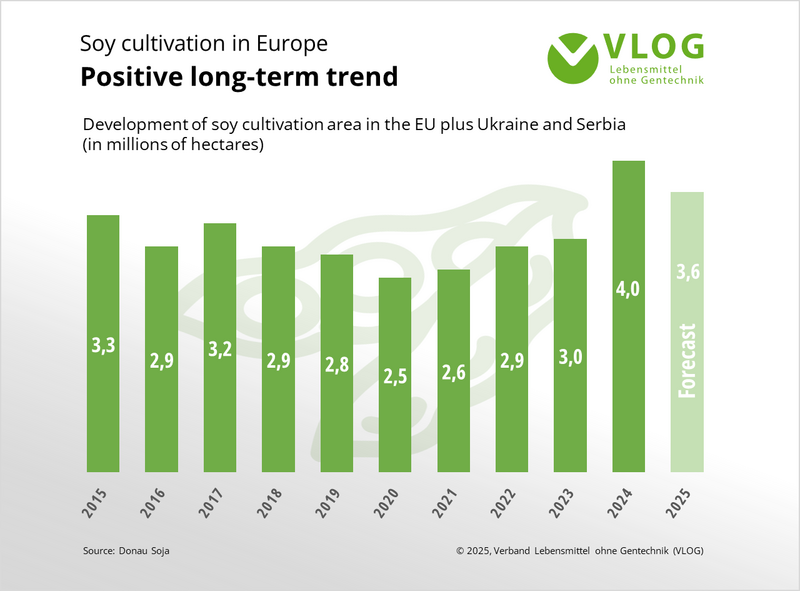News
Long-term positive trend for soybeans from Europe
According to the Donau Soja organisation, the soy cultivation area in the EU plus Ukraine and Serbia will total around 3.6 million hectares in 2025. This is 0.4 million hectares less than in 2024, but still significantly more than in previous years. So, the long-term trend remains positive.
A smaller area but a higher yield is anticipated in the EU
Donau Soja EU forecasts an 8 percent decline in the EU’s soybean cultivation area to 1.1 million hectares in 2025. This would be the second largest area to date after the record area in the previous season. The average soybean yield forecast in the EU for the 2025 harvest is 2.85 tons per hectare - This corresponds to a 7 percent increase compared to the five-year average for 2020–2024.
Decline in acreage in Ukraine and Serbia
In Ukraine, the soybean acreage in 2025 will be 2.3 to 2.4 million hectares. This is 7 to 10 percent less than the previous year's 2.6 million hectares. For Serbia, Donau Soja anticipates a decline in cultivation area of over 40 percent to around 150,000 hectares in 2025, mainly due to a lack of certified seed.
Long-term positive trend is a good indicator for the food industry
Despite the smaller cultivation area in 2025 than in the previous year, the long-term trend remains firmly upward, with Europe now capable of meeting a considerable portion of its soy requirements through domestic production. This is a good sign, especially for the GMO-free food production, as soybeans from the EU are generally GMO-free and therefore aperfect fit for this.
Switching to European soybeans is the clear choice
Donau Soja therefore sees great advantages for the food industry in switching to regional soybeans from Europe. Donau Soja and Europe Soya meet the requirements for "Ohne Gentechnik" (Non-GMO) labelling, but also the criteria of the EU Forest Protection Regulation. In addition, according to the organisations themselves, their certifications achieve a CO2 reduction of up to 90 percent compared to Brazilian soybeans.

